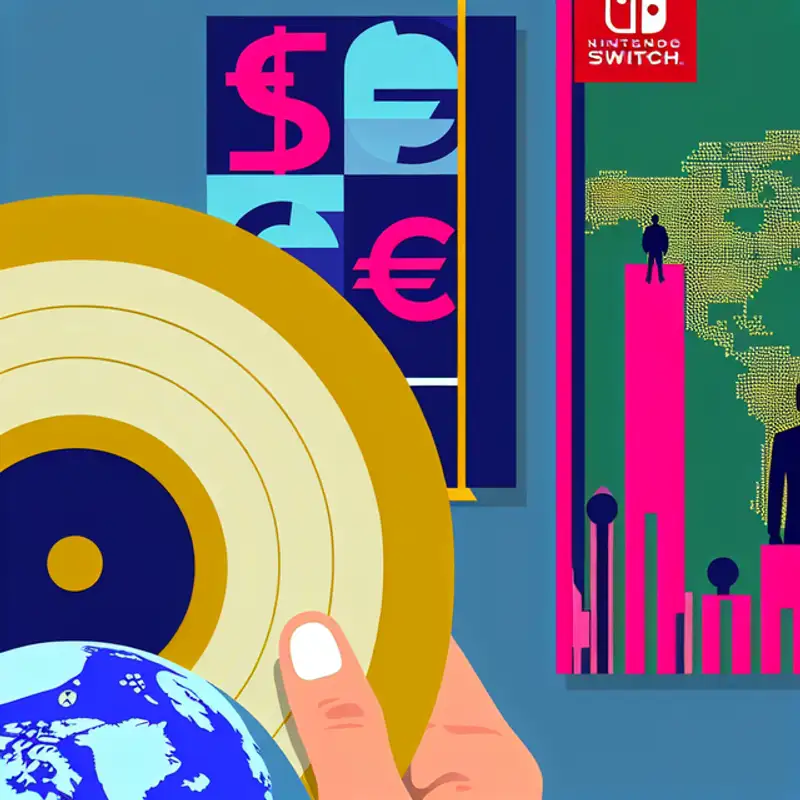 Episode
Episode
· 03:22
🎮 Summary for Podcast Reading 🎮
So, Nintendo's upcoming Switch 2 carries a $450 price tag in the U.S.—a full $150 more than the original Switch—and many fans were understandably stunned. But senior Verge editor Sean Hollister digs deep into the global economic backdrop to explain why Nintendo can “get away” with it. Between rising U.S. inflation and a record-weak Japanese yen, what looks like price gouging is actually just currency math and inflation catching up. While it feels unfair that Japan is getting the system for what converts to $333, the reality is that both U.S. and Japan prices have increased by almost exactly 50% over the 2017 original, reflecting economic shifts rather than corporate greed. Add to that Nintendo’s near-monopoly in the handheld market—Microsoft and Sony aren’t competing with new portable consoles anytime soon—and that $450 no longer looks quite so outrageous.
📌 Key Takeaways
💰 Sticker Shock: The Nintendo Switch 2 will launch at $450 in the U.S. and ¥49,980 (~$333) in Japan.
🧮 Economics 101: The price difference stems from currency exchange rates. The yen is currently very weak, making U.S. dollars go further in Japan. In 2017, $1 was worth 114 yen; today it’s nearly 150 yen.
📈 Inflation Adjustment: U.S. inflation means that a $300 Switch in 2017 would cost about $400 today, even before factoring in hardware improvements.
🔄 Equal Hike: Both the U.S. and Japan versions are roughly 50% more expensive than the original model, suggesting Nintendo adjusted for inflation across the board, not introduced arbitrary markups.
🎙️ Quote from the Article: “Salaries and cost of living hasn’t changed at all here so 49,980 feels like 450 USD,” said a Tokyo-based game streamer, underlining the relative impact of pricing in Japan.
🚫 Region Locking: Nintendo is reportedly region-locking the Japan-exclusive model to prevent international buyers from taking advantage of the cheaper price due to exchange rates.
🕹️ No Real Rivals: Without serious handheld competition from Sony, Microsoft, or even most PC-based handhelds, Nintendo can afford to set a higher price. The Steam Deck still can’t match the Switch’s mainstream reach.
🇯🇵 Japan’s Handheld Dominance: Even the cheapest PS5 in Japan is significantly more expensive (¥72,980) than the new Switch 2, reinforcing Nintendo’s dominance in its home market.
🧊 Cold Comfort in U.S.: While American gamers grumble, Nintendo isn’t just inflating prices arbitrarily—it’s playing currency chess and winning without any counterplay from rivals.
💼 Tariff Loophole: Nintendo is also benefiting from a 90-day reprieve from certain U.S. tariffs, thanks to a decision by President Trump, which conveniently covers the June 5 Switch 2 launch. If prices rise later, Nintendo can say, “Blame the tariffs.”
Final thought? Nintendo didn’t just slap on a $450 tag for kicks—it’s a calculated move based on economic tides, a soft competitive field, and a pricing philosophy that quietly applies the same markup worldwide. And whether we like it or not, they might just be able to pull it off.
Link to Article
Listen to jawbreaker.io using one of many popular podcasting apps or directories.